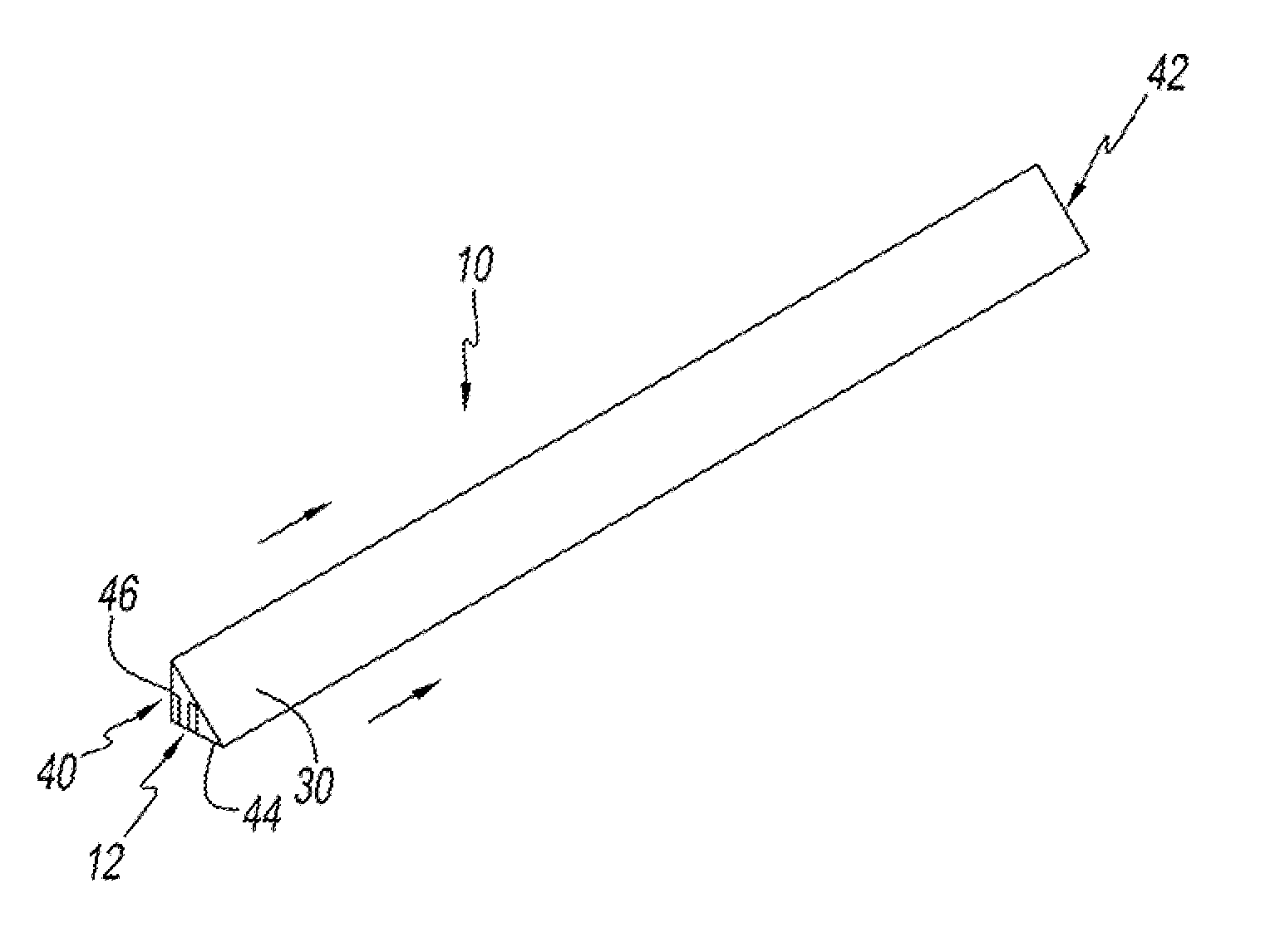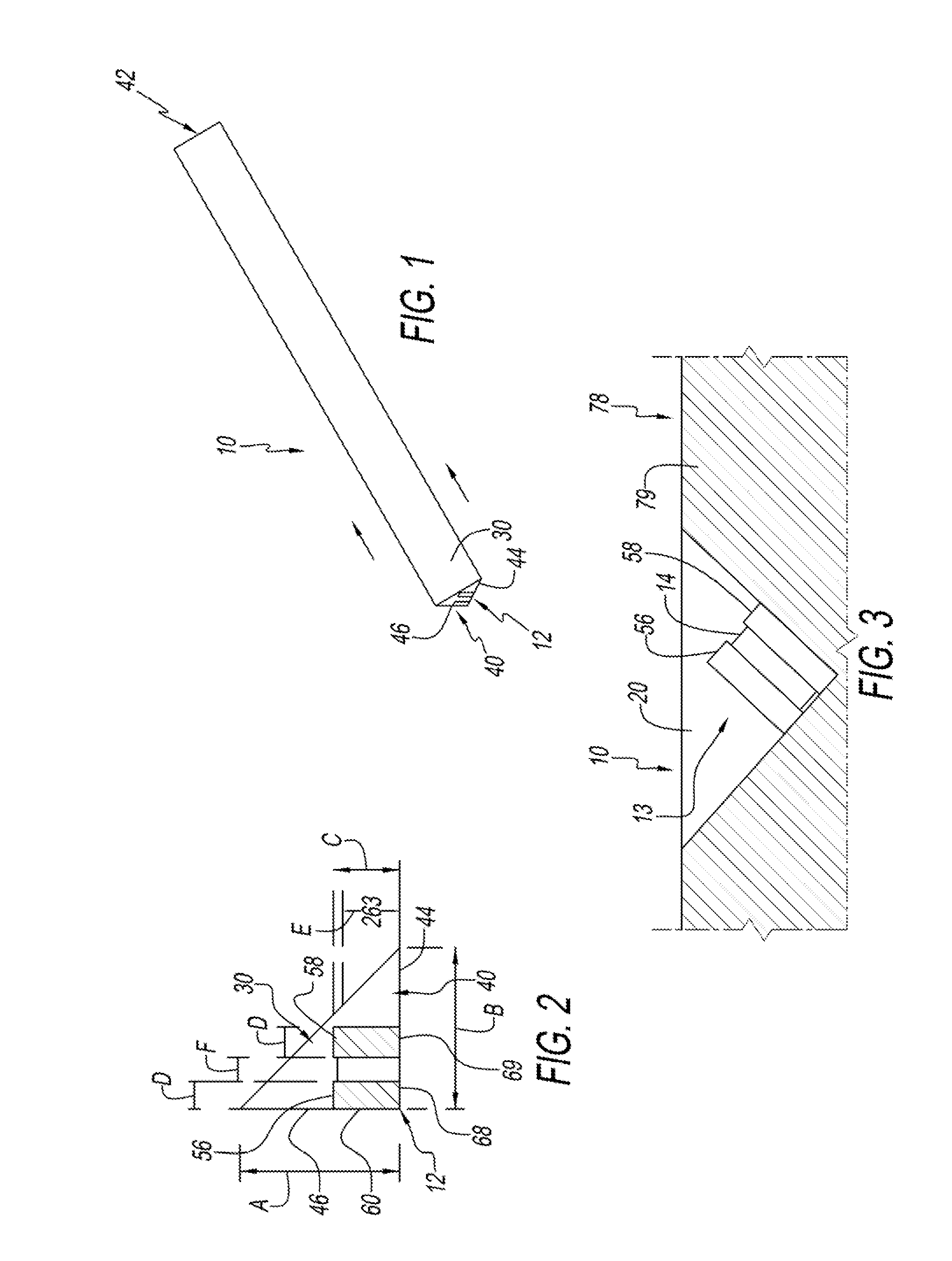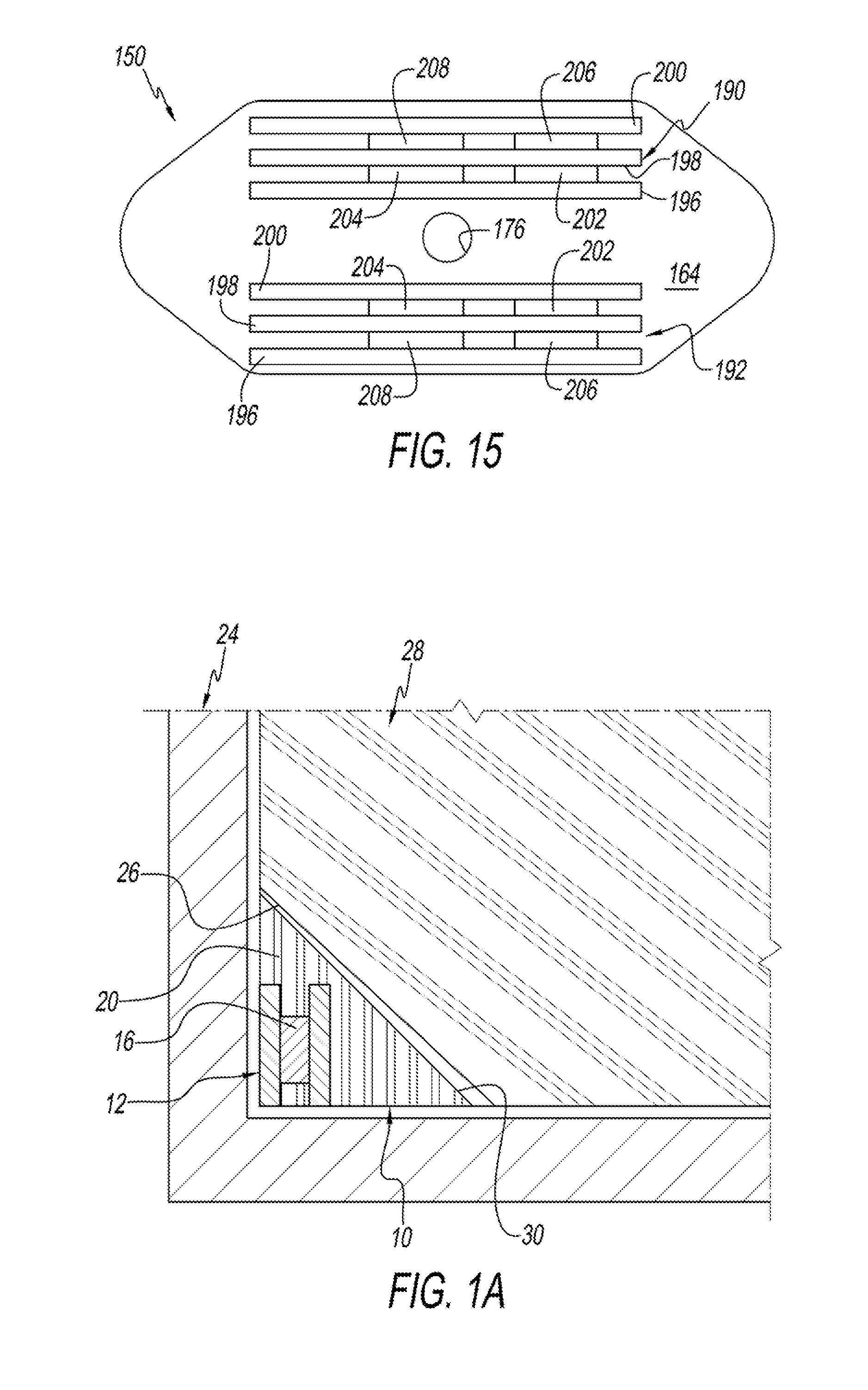Rigid composite structure for magnetic coupler
a composite structure and magnetic coupler technology, applied in the direction of mould fastening means, ceramic shaping apparatus, printing, etc., can solve the problems of insufficient concrete release, steel inserts can rust, and extra labor is required to separate steel inserts from the concrete structure created
- Summary
- Abstract
- Description
- Claims
- Application Information
AI Technical Summary
Benefits of technology
Problems solved by technology
Method used
Image
Examples
third embodiment
[0089]The third embodiment insert 150 is shown in FIGS. 13-15 as including a body portion 152 that is preferably made from a composite material such as urethane or rubber. Preferably, the urethane or rubber is a relatively rigid compound and has a hardness of somewhere close to or near 90 shore A.
[0090]The body portion 152 of the third mold insert 150 includes a frustoconical perimetral surface 156 that is designed to be frustoconical to promote easy release of the mold insert 150 both from the mold in which it is created, and the mold in which it is used to form a product, such as the pre-cast concrete slab staircase, etc.
[0091]The particular shape of the third embodiment insert 150 is such that it has a first triangular end portion 157, a second triangular end portion 158 and a rectangular middle portion 160 that is disposed between a first and second triangular end portions 157, 158.
[0092]Mold insert 150 further includes a generally planar bottom portion 164 that serves as the mo...
fourth embodiment
[0097]A fourth embodiment mold insert 218 is shown in FIGS. 16-18. The fourth mold insert 218 has a significant number of similarities with second and third mold inserts 100, 150. The primary differences are the fourth mold insert 218 has a different size and shape than the other two mold inserts 100, 150. Additionally, the fourth mold insert 218 lacks a central aperture (that could be added if desired), and also lacks the two-level platform of the mold inserts 100. 150 shown above.
[0098]The fourth embodiment mold insert 218 includes a frustoconical, perimetral surface 220, a one-level, planar top surface 222 and a planar bottom mold engaging surface 224. First and second upstanding posts 226, 228 rise upwardly from the planar top surface 222, and are employed to form blind cavities as features in the product, such as the concrete structure with which the mold insert 218 was employed.
[0099]A first and second stiffener / magnet assembly 232, 234 are disposed in the body portion 236 of ...
embodiment 150
[0100]The first and second stiffener members 232, 234 are constructed generally similarly to the mold stiffener members 124, 126 shown in connection with the mold insert of FIG. 11 and the first and second stiffener / magnet assemblies 190, 192 shown in connection with the third mold insert embodiment 150 shown in FIGS. 14.
PUM
 Login to View More
Login to View More Abstract
Description
Claims
Application Information
 Login to View More
Login to View More - R&D
- Intellectual Property
- Life Sciences
- Materials
- Tech Scout
- Unparalleled Data Quality
- Higher Quality Content
- 60% Fewer Hallucinations
Browse by: Latest US Patents, China's latest patents, Technical Efficacy Thesaurus, Application Domain, Technology Topic, Popular Technical Reports.
© 2025 PatSnap. All rights reserved.Legal|Privacy policy|Modern Slavery Act Transparency Statement|Sitemap|About US| Contact US: help@patsnap.com



